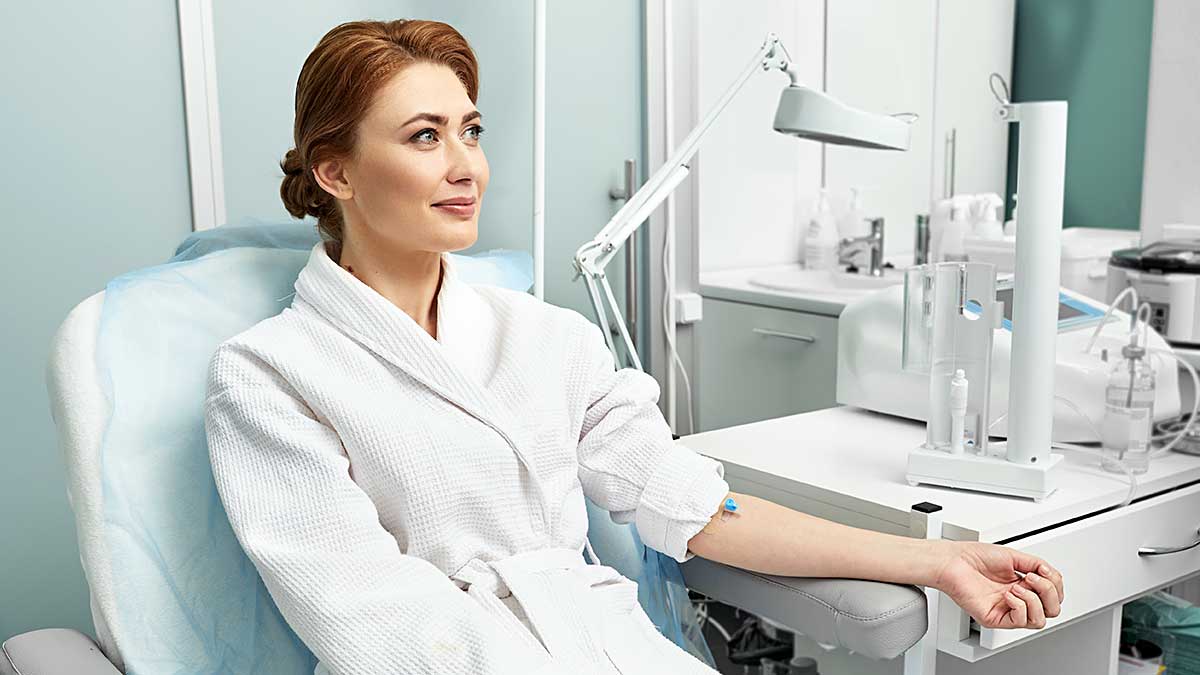Magda Explains: Intravenous Ozone Therapy: A Comprehensive Guide to Health and Wellness
Magdalena Szczepanska, NP – Downstate Adult Health NP
July 12, 2024

“If ozone therapy were patentable, it would be the most used therapy in medicine today.” - Horst Keif, MD
Exploring the Benefits and Controversies of Intravenous Ozone Therapy, Including Major Autohemotherapy
In alternative medicine, innovative treatments often challenge traditional health and wellness approaches. One such treatment gaining attention is intravenous ozone therapy, particularly Major Autohemotherapy (MAH), which involves infusing ozone gas into the bloodstream. For over 50 years, ozone therapy has been safely used worldwide in medicine. Advocates of this therapy claim a wide range of health benefits, including antiaging effects, while skeptics raise concerns about safety and efficacy. Let's delve deeper into this intriguing yet controversial therapy.
Understanding Intravenous Ozone Therapy and Major Autohemotherapy
Ozone (O3) is a molecule composed of three oxygen atoms, known for its powerful oxidizing properties. In medical applications, ozone therapy involves creating a mixture of ozone and oxygen gas, which is then infused into the bloodstream through intravenous (IV) administration. Major Autohemotherapy (MAH) refers explicitly to withdrawing a patient's blood, mixing it with ozone, and then reinfusing it into the body.
Potential Health Benefits
Proponents of intravenous ozone therapy and MAH suggest a myriad of potential health benefits, including:
- Improved Oxygenation: Ozone is believed to enhance the delivery and utilization of oxygen in tissues, benefiting cellular function and energy production.
- Immune System Modulation: It's theorized that ozone therapy can stimulate the immune system, potentially enhancing its ability to fight infections and chronic diseases.
- Anti-inflammatory Effects: Ozone may reduce inflammation by influencing cytokine production and other inflammatory mediators.
- Detoxification: Advocates claim that ozone therapy can support detoxification by helping the body eliminate toxins and free radicals.
- Antiaging Effects: Some proponents suggest that ozone therapy can slow aging by improving cellular metabolism and reducing oxidative stress.
Clinical Applications
Intravenous ozone therapy, including MAH, can be used to treat a variety of conditions, such as:
- Chronic infections (e.g., Lyme disease, viral infections)
- Autoimmune diseases
- Cardiovascular conditions
- Chronic fatigue syndrome
- Allergies and asthma
- Skin conditions (e.g., eczema, psoriasis)
- Cancer (as an adjunct therapy)
- Parkinson’s Disease
- Cirrhosis of the liver
- Macular degeneration
- Post Covid symptoms/ Long Haul Covid
- Increase wound healing
- Reynaud’s disease
Controversies and Risks
As with many alternative therapies, intravenous ozone therapy and MAH are not without controversy and potential risks:
- Safety Concerns: Direct infusion of ozone into the bloodstream carries risks, including blood vessel damage and oxidative stress. We do not recommend direct infusions; we typically administer it via Major Autohemotherapy (MAH).
- Lack of Consensus: The medical community remains divided on the efficacy and safety of ozone therapy due to the limited number of well-designed clinical trials.
- Regulatory Issues: Ozone therapy, including MAH, is not universally regulated or standardized, leading to variability in treatment protocols and quality.
- Potential Side Effects: Reported side effects include nausea, dizziness, headache, and, in rare cases, more serious complications like blood clotting or stroke.
Conclusion
Intravenous ozone therapy, particularly Major Autohemotherapy (MAH), represents a fascinating intersection of alternative medicine and biochemical science. While some patients and practitioners swear by its benefits, others caution against its use due to the lack of robust scientific evidence and the potential risks.
As research continues and understanding deepens, the role of intravenous ozone therapy and MAH in modern medicine may become clearer. Until then, it remains an area where personal anecdotes often clash with scientific skepticism, highlighting the ongoing complexities in the pursuit of health and wellness, including potential anti-aging benefits.
Szczepanska, Magdalena, NP – Downstate Adult Health NP
Functional Medicine
Port Jervis, NY
SPONSORED ARTICLE
For the most up-to-date information, please contact the company directly.The photos contained in the article serve only as an illustration of the article.
BUSINESS ONLINE CATALOG
